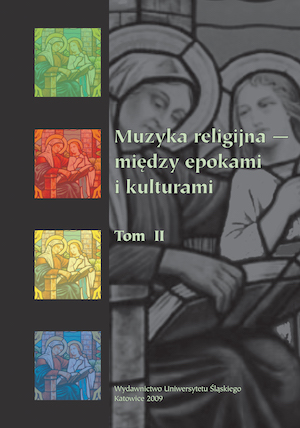Dionizos, Agni, Swaróg — wielokulturowy krąg inspiracji w twórczości Ludomira Michała Rogowskiego
Dionysus, Agni, Svarog — a multicultural circle of inspirations in works by Ludomir Michał Rogowski
Author(s): Ewa Wojtowicz
Subject(s): Music
Published by: Wydawnictwo Uniwersytetu Śląskiego
Summary/Abstract: Rich and diversified works by L.M. Rogowski (1881—1954) derive from his fascinationwith a spiritual tradition of several cultural circles. The first of them was the Greek mythology,especially, the figure of Dionysus, referred to in a symphonic picture Cortège de Dionysos(1919). The Greek god of wine and fertile powers of nature also played an important role inesthetic viewpoints held by Rogowski who, in his works, aimed at the realization ofa Nietzschean ideal of a “Dionysus’s art”. Next, it was the inspiration of Hindu mythology inthe series of Fantasmagorie on a female voice and small symphonic orchestra (1920). The titlescontain the names of the characters from the pantheons of Indian gods: Kriszna, Genesa,Kama and Agni. Their musical characteristic consists in the usage of, above all, scales beyondthe dur-moll system, i.e. the Persian Zirefkend scale and the whole tone one. Finally,Rogowski reached the selected motives from the Slavic mythology and basing on them, createdballets such as Kupała (1926), Korowaj (1938) and Wizje pogańskie on a mixed choirand small symphonic orchestra (1951). Looking for the music means appropriate for theworks in question, in 1936 Kassern introduced the so called “Slavic” scale, however, his conceptionof “Slavness”, both in the context of music material and ideas, includes the elementsderived from the culture of India and Persia.
Book: Muzyka religijna – między epokami i kulturami. T. 2
- Page Range: 88-102
- Page Count: 15
- Publication Year: 2009
- Language: Polish
- Content File-PDF

